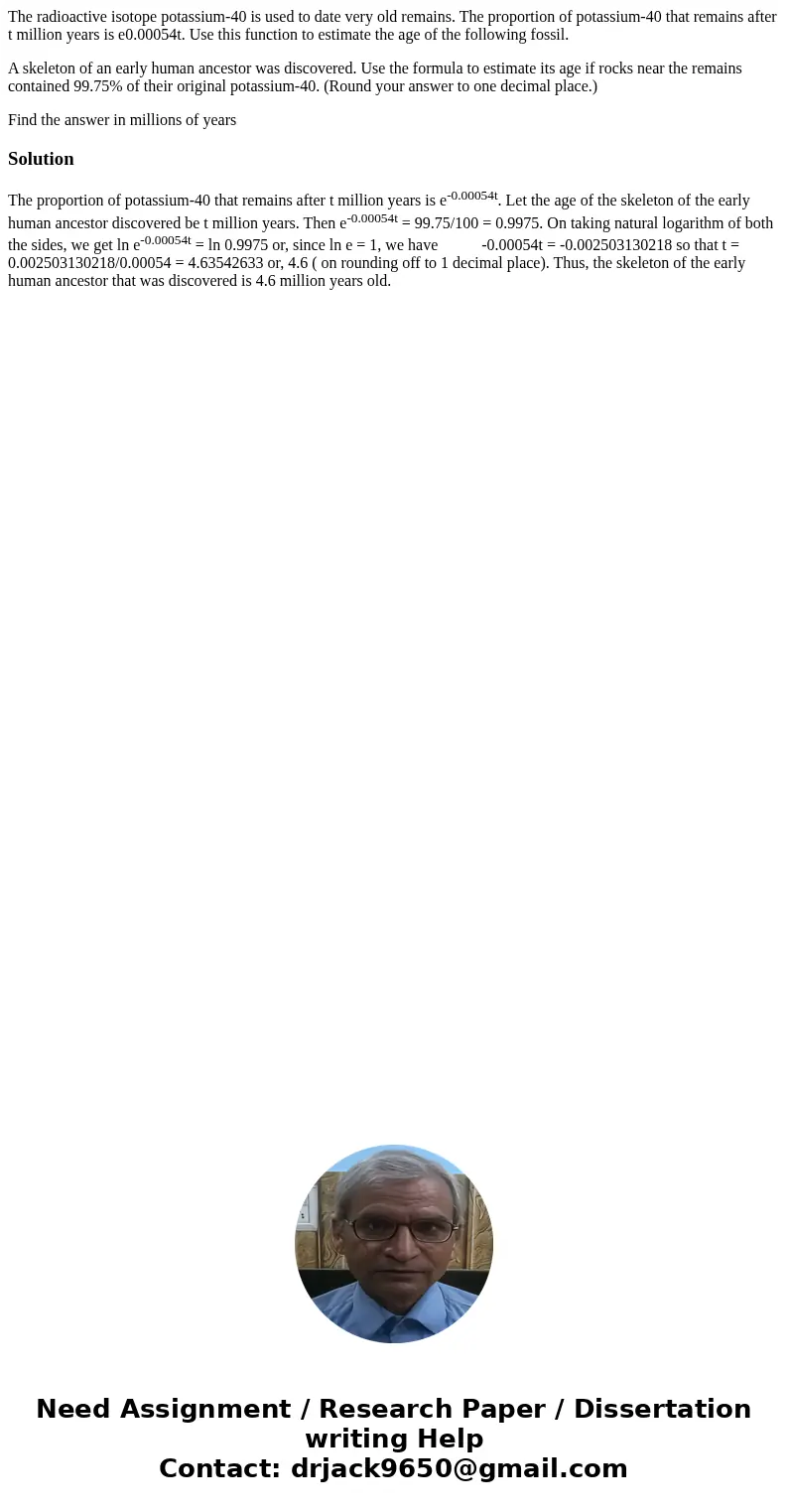The radioactive isotope potassium40 is used to date very old
The radioactive isotope potassium-40 is used to date very old remains. The proportion of potassium-40 that remains after t million years is e0.00054t. Use this function to estimate the age of the following fossil.
A skeleton of an early human ancestor was discovered. Use the formula to estimate its age if rocks near the remains contained 99.75% of their original potassium-40. (Round your answer to one decimal place.)
Find the answer in millions of years
Solution
The proportion of potassium-40 that remains after t million years is e-0.00054t. Let the age of the skeleton of the early human ancestor discovered be t million years. Then e-0.00054t = 99.75/100 = 0.9975. On taking natural logarithm of both the sides, we get ln e-0.00054t = ln 0.9975 or, since ln e = 1, we have -0.00054t = -0.002503130218 so that t = 0.002503130218/0.00054 = 4.63542633 or, 4.6 ( on rounding off to 1 decimal place). Thus, the skeleton of the early human ancestor that was discovered is 4.6 million years old.

 Homework Sourse
Homework Sourse